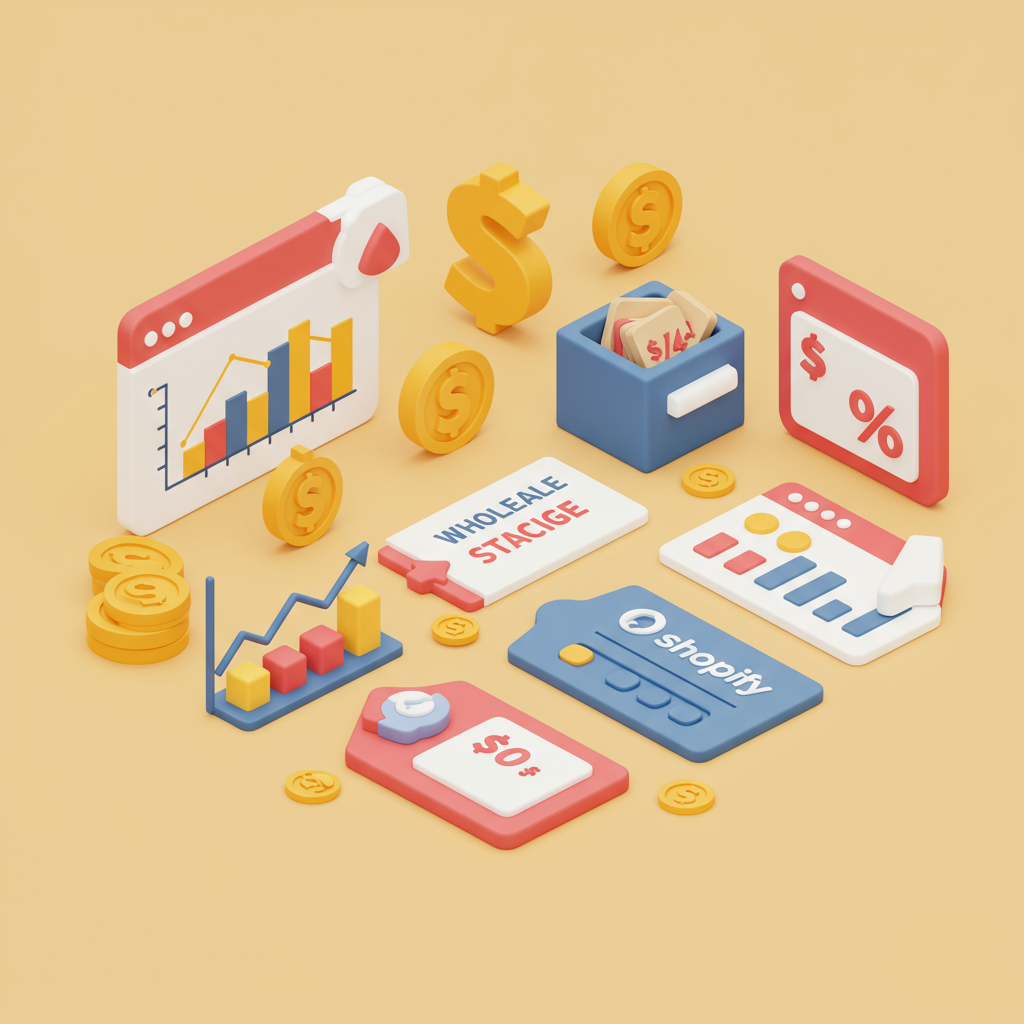Unlock new revenue streams and expand your market reach by implementing effective wholesale pricing models on your Shopify store.
As a merchant navigating the vast world of e-commerce, I’ve learned that expanding beyond direct-to-consumer (DTC) sales can unlock significant growth opportunities. One of the most powerful avenues for this expansion is wholesale.
Wholesale isn’t just about selling more units; it’s about reaching new markets, building brand awareness through other retailers, and establishing a more diversified revenue stream for my Shopify store.
However, diving into wholesale requires a strategic approach, especially when it comes to pricing. It’s not as simple as just cutting your retail price in half. There’s a delicate balance to strike.
My goal with this article is to guide you through the essential strategies for setting up effective wholesale pricing on your Shopify store, ensuring profitability while attracting the right B2B partners.
First, let’s talk about the foundational elements of any pricing strategy: understanding your costs. I always start by meticulously calculating my Cost of Goods Sold (COGS) for each product.
COGS includes raw materials, labor, manufacturing overhead, and any direct costs associated with producing your item. Without a clear grasp of this, any pricing model I choose will be built on shaky ground.
Next, I consider my desired profit margin. While wholesale margins are typically lower than retail, they should still be healthy enough to cover operational costs and contribute to my business’s growth.
I also research market rates. What are similar products selling for at wholesale? This helps me position my products competitively without undercutting my value or overpricing myself out of the market.
Now, let’s explore some common wholesale pricing models I’ve found effective on Shopify. The most straightforward is often a fixed wholesale price per unit.
This model involves setting a specific, lower price for wholesale customers, distinct from your retail price. It’s simple to implement and easy for buyers to understand.
Another popular strategy I employ is percentage-off retail pricing. For example, I might offer wholesale customers 40% off my standard retail price.
This method maintains a clear relationship between your retail and wholesale prices, which can be beneficial for brand consistency and perceived value.
For larger orders, I often implement tiered pricing or volume discounts. This encourages buyers to purchase more units, increasing their average order value and my overall revenue.
For instance, I might offer one price for 10-20 units, a lower price for 21-50 units, and an even lower price for 51+ units. This incentivizes bulk purchases.
Minimum Order Quantity (MOQ) is another crucial element I incorporate. Setting an MOQ ensures that wholesale orders are substantial enough to be profitable after accounting for processing and shipping.
My MOQs vary by product, but I always ensure they make economic sense for both my business and the wholesale buyer.
Sometimes, I even create customer-specific pricing. This is particularly useful for long-term partners or very high-volume accounts where I want to offer exclusive rates based on our ongoing relationship.
Implementing these strategies on Shopify can be done in several ways. For basic wholesale, I might use Shopify’s draft orders feature to manually create invoices with wholesale pricing.
However, for a more scalable and automated solution, I highly recommend exploring Shopify wholesale apps. Apps like “Wholesale Club,” “Wholesale Gorilla,” or “B2B/Wholesale Solution” offer robust features.
These apps allow me to create separate customer groups, assign specific pricing tiers, hide retail prices from wholesale customers, and even manage MOQs directly on my storefront.
I also make sure to create a dedicated wholesale application page on my Shopify store. This streamlines the onboarding process for new wholesale partners and sets clear expectations.
On this page, I outline my terms and conditions, MOQs, payment terms, and shipping policies. Transparency is key to building strong B2B relationships.
Once a wholesale account is approved, I tag their customer profile in Shopify, which then triggers the wholesale pricing or access to specific wholesale products via the app I’m using.
Don’t forget about shipping! I always factor in shipping costs when calculating wholesale prices or offer clear shipping policies for wholesale orders, whether it’s flat-rate, calculated, or free over a certain threshold.
Payment terms are also critical. While retail is typically upfront, I might offer Net 30 or Net 60 terms for established wholesale partners, though I always start with upfront payment for new accounts.
Finally, I regularly review my wholesale pricing strategy. Market conditions change, costs fluctuate, and my business goals evolve. What worked last year might need adjustment this year.
By consistently analyzing my sales data and gathering feedback from my wholesale partners, I can refine my pricing to ensure it remains competitive and profitable.
What do you think about these strategies? Have you found success with other approaches on your Shopify store? I’d love to hear your insights.
Implementing a well-thought-out wholesale pricing strategy on Shopify can significantly boost your business. It’s an investment in growth that pays dividends by expanding your reach and diversifying your income.
I encourage you to take these insights and apply them to your own Shopify store. With careful planning and the right tools, your wholesale channel can become a powerful engine for success.






